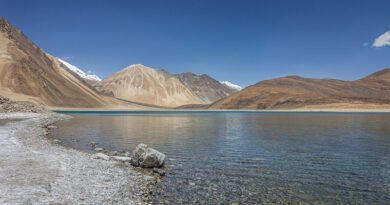Water use limitations, pricing, enhanced efficiency to help mitigate water-related insecurity in India

Improved data collection and information systems, green and gray water-storage systems and water-use limitations in high-stress areas are some of the solutions that could help mitigate water-related insecurity in India, a new report has said.
The size and complexity of water challenges in India means that no single solution or set of solutions can be applied universally, but there are many options that can lower water risks and water insecurity.
Some of the measures are increasing water-use efficiency and conservation in agriculture, protecting ecosystems and implementing ecological flow commitments, establishing water-use limitations in oversubscribed watersheds and aquifers, increasing water prices, improving water management, and implementing socially responsible population policies to help slow and reverse population growth rates, the recent report jointly produced by World Resources Institute (WRI) and Pacific Institute with the Water, Peace and Security Partnership, notes.
Water security challenges, and related instances of human conflict, are increasing across the world as populations grow, economies expand, and climate change begins to impact the hydrological cycle, the report that features six in-depth case studies covering water challenges faced by India, Iraq, Iran, the African Sahel, Central America and Yemen, said.
In India’s case, the report said recent drought conditions throughout the country have precipitated violent and non-violent demonstrations and marches, led to disputes between states over scarce water supplies, left urban dwellers without water, and forced rural inhabitants to flee their towns and villages.
“Several factors make India highly vulnerable to extreme weather. Monsoons bring rainfall in very compressed time periods, making any deviation from normal monsoon patterns highly consequential for farmers. In addition, there is very little water storage capacity in India, making it nearly impossible to use excess water from one year to help tide people over during drought conditions in years that follow. Finally, many farmers are very poor and live hand-to-mouth, with few reserves to help them through even short periods of difficulty”, the report states.
Population size and growth rates, unsustainable water use for irrigation and outmoded water resources management regimes have been identified as major drivers of the crisis.
The report describes a global rise in water-related conflict, observing political instability and intensifying driving factors, including population growth, economic expansion, severe and prolonged drought, climate change, pollution, the destruction of natural landscapes, upstream infrastructure development (such as dams and diversions), inefficient water use in agriculture, poor water resources management and weak institutions.
According to the report, population growth and economic expansion are sharply increasing water demand in many regions of the world. Water supply is expected to decrease in the mid-latitude regions of the world because of climate change. As temperatures rise, the amount of water needed to irrigate agriculture is predicted to increase due to higher rates of evaporation and crop transpiration.
Upstream countries of increasingly-stressed water basins are building dams and siphoning off water with little or no consultation with downstream neighbours. Also, much of the world’s irrigated agriculture uses inefficient flood irrigation schemes while water-intensive crops are planted in areas of high water stress.
As a result, billions of people are facing increasing challenges, including highly polluted water, increasingly erratic rainfall leading to more severe droughts and floods, and lack of access to safe and affordable drinking water.
These water challenges, already urgent before COVID-19, lead to increased insecurity, migration and a growing risk of violent conflict, especially in developing countries that lack the financial, technical and governance capacities to deal with these problems, the authors said.
Despite the apparent complexity of many water and security challenges identified, researchers say that potential solutions aren’t difficult to identify once the key drivers of risk are correctly understood. And while the incidence of water-related conflict appears to be increasing, researchers identified a number of solutions that can be implemented to address water challenges and enhance security.
Proposed solutions centre around natural resources; science and engineering approaches; political and legal tools; economic and financial tools; and policy and governance strategies.
Solutions are likely to be difficult to implement for a number of reasons. They include political and economic trade-offs inherent in proposed solutions, problems associated with collective action, a lack of sufficient financial resources and/or technical capacity, the presence of social or cultural barriers, and the existence of widespread and entrenched corruption.



